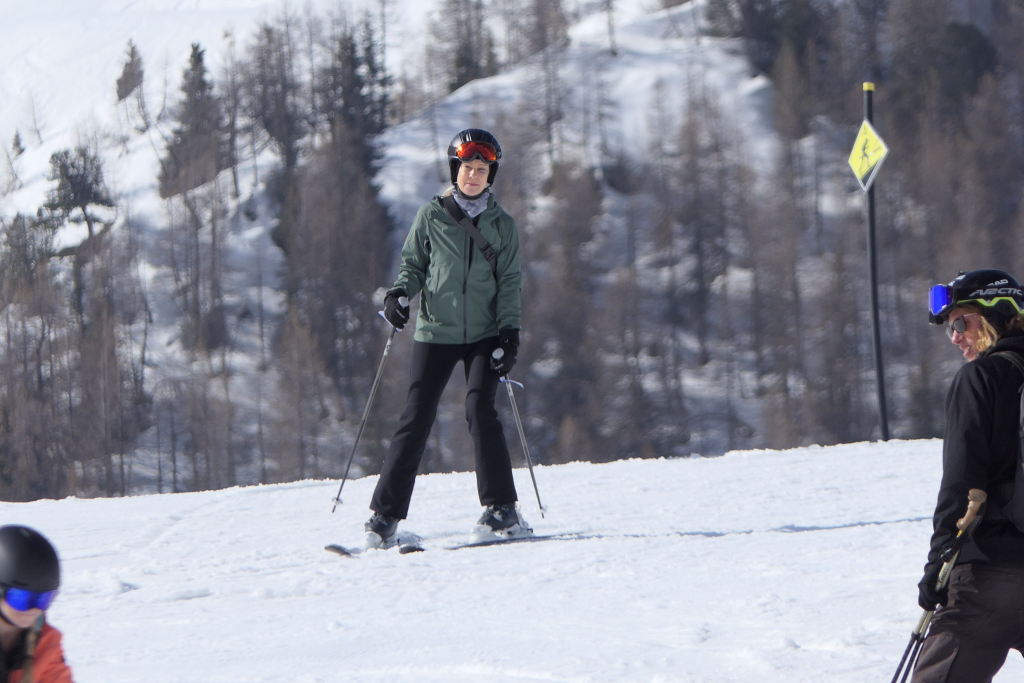
The differences at this stage are much more felt by the skier rather than being very visible – the upper photo showing the weight being kept between the two skis and no intentional disequilibrium – creating a battle taking place on many fronts simultaneously. The lower photo shows relaxed dynamics and the centre of mass being intentionally displaced towards the turn centre.
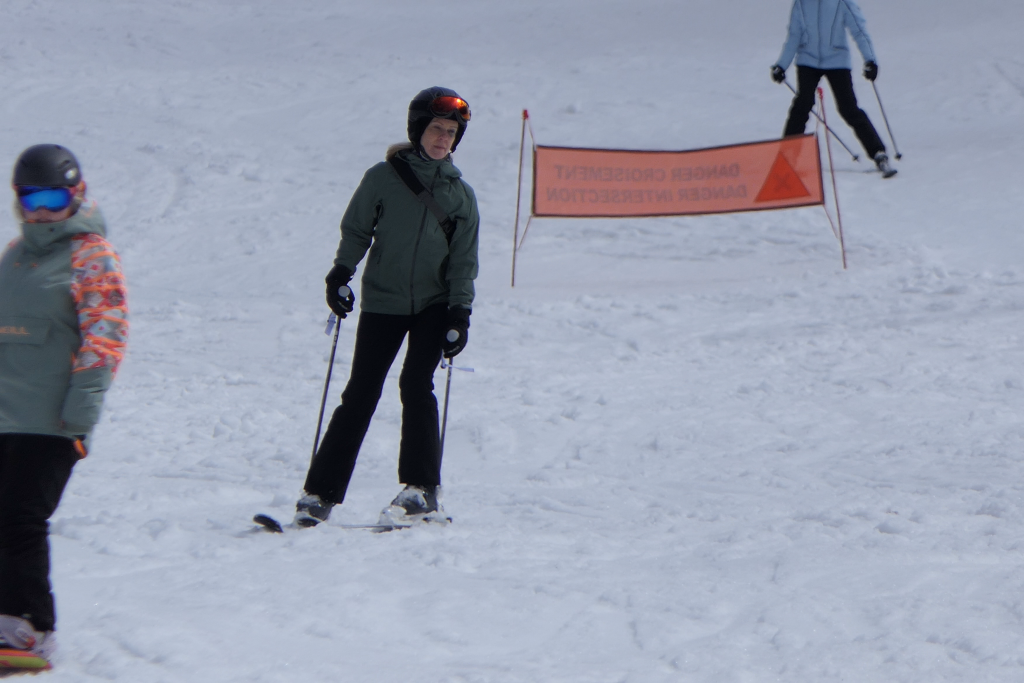
- Basic Dynamics
- Combining Dynamics with Snowplough
- Skating
- Side Slipping
- Pivot
- Combining Dynamics with Pivot
- Body Management/Hip Angulation
Combining Dynamics and Snowplough
Dynamics is explained in terms of the mechanics of accelerations. (F=mA Newton’s 2nd Law). In skiing this means you move your centre of mass (either falling or with a push) in the direction you want to turn. You do not transfer your weight to the outside ski as is incorrectly taught in ski schools.
In the (narrow) Snowplough using dynamics requires the adductors of both legs to be engaged and now the “deflection” (turning in an arc) is carried out by moving the Centre of Mass (CoM) across the skis in the direction of turning. The displacement of the CoM affects the geometry of both skis with respect to the slope (one goes flatter and the other more on edge) and that’s where the deflection comes from.
On steeper terrain the downhill ski (inside ski of the turn) takes the weight of the body and is used as a brake – pivoting slowly into the turn – until half way through the weight shifts by itself to the outside ski which is now able to take over the continued braking effect.
Combining Dynamics and Pivot
- Dynamics depends of forward motion of the skis and lateral falling/pushing of the centre of mass
- Pivot depends on lateral motion of the skis – but always with the centre of mass being driven inward (toward the turn centre) modulated by the support of a pole plant
- The two can be combined – when there is both forward and lateral motion – making overall control of trajectory and speed totally under control of the skier
- In all cases there must be active adductor muscle use – and the feet must be “everted” i.e. turned outward inside the ski boots – diverging sightly (skating stance)
- The essential element to take from combining pivot and dynamics is to execute the turn transition from the uphill edge of the uphill ski – noting that the ski enters the new turn more easily than when on its inside edge and this also prevents stemming (and body rotation)
- Additionally with the transition between the two turns being made from the uphill edge it’s easy to switch into a very tight pivot when desired
Look at the skis in the two images below. The top image is with skis carving – the bottom image skis pivoting
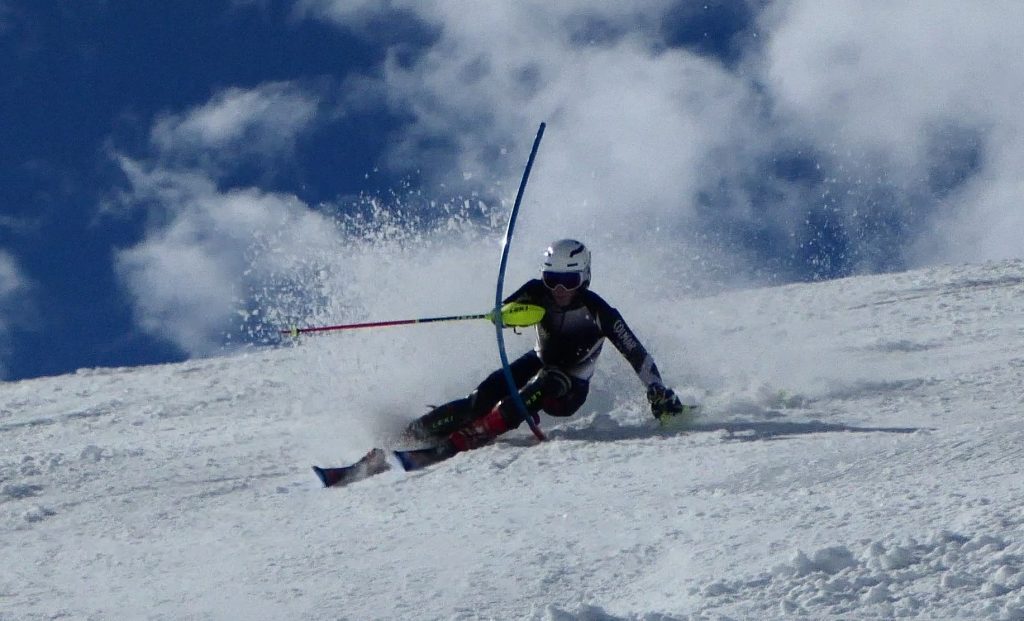

Body Management (Hip Angulation, Anticipation, Control of Rotation, Linked Short Turns)
Take a look at the two Olympic champion skiers in the photograph below.
Killy’s image from the 1960s has his chest facing downhill whereas Noel’s image from 2022 has his chest facing forward. What Killy is doing destroys your lower back and is probably why he never went on skis again after he stopped racing.
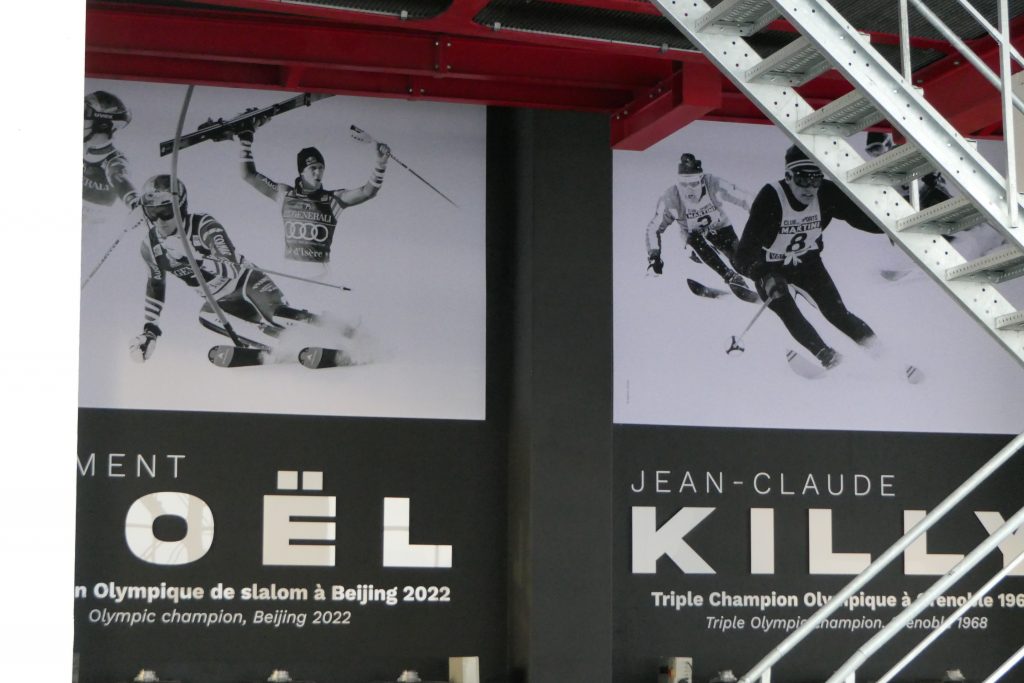
Protecting the Spine
- Hold the front of the pelvis up – aiming for “neutral pelvis”
- During the turn pull the outer hip backwards so that the ski doesn’t pull it in front of your ribs
- Look for a stretch between the ribs and hip joint
- Look for a reflex contraction of the lower abdominals – the postural reflex
- Keep the shoulders/chest following the skis (to some degree)
- Always “counter turn” the pelvis more than the chest/shoulders (It’s only the pelvis that should “face downhill”)
- Pulling the hip backwards also prevents both hip rotation and full upper body rotation
Source of Hip Angulation
The upper body needs to tilt forward over one hip joint – then rotate around it. This is in addition to pulling back the outside hip etc.
The body shape produced alters the location of the centre of mass enabling pressure on the ski fronts and also greater agility both into and out of turns – and pole planting if the skis are swinging laterally.
The hip angulation also provides flexion of the hip joint that gives absorption of shocks. Increased angulation also increases the edge angle of the skis to the snow and may alter the turn radius and grip.
Angulation when upright and pivoting has another function – when ANTICIPATING the next turn it is used to get the Centre of Mass out of the existing turn (by tilting the torso forward at the hip ) and letting the Centre of Mass move over the skis to plant the ski pole downhill for a strong, clear and definite support.
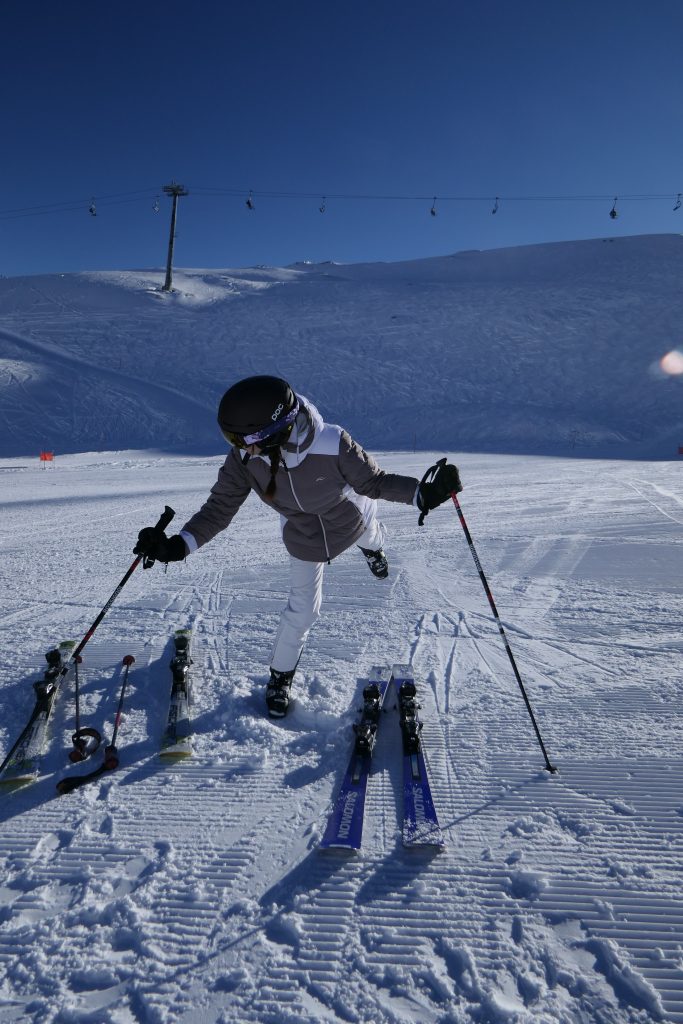
When the entire body inclines into the turn with hip angulation present this below is what it looks like.
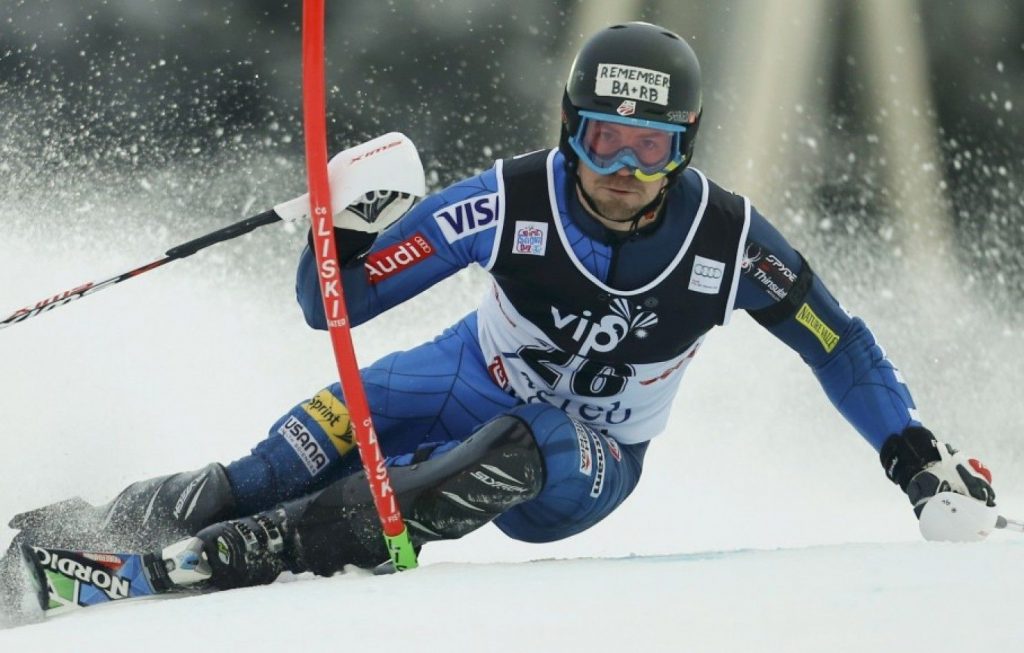
(Extra information, because we discussed how skiing mechanics resembles high speed motorcycle racing)
Hanger Turns
While leg retraction is the fastest way to get the body across the skis from one turn to the next sometimes instead it is necessary or preferable to direct the body across the hill – where using the downhill ski to complete the turn then becomes desirable.
Visualize a motorbike going into a turn and coming down low to the ground then back up out of the turn to complete it. Then visualize doing all of that on the outside ski of a single turn on skis – letting the ski lift the body up and out of the turn and finishing going across the slope with the skis now flat on the surface. Sometimes the entire turn transition into the next turn can also be carried out on this downhill ski – this being named a “Hanger Turn”. Basically this entails a complete commitment of the centre of mass directed laterally to the skis and downhill.

